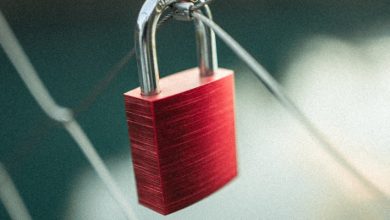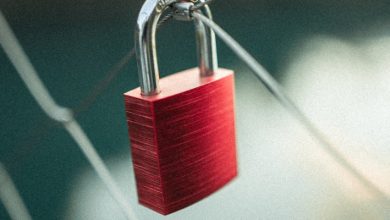How to Conduct a Security Audit for Blockchain Applications

- How blockchain applications are vulnerable to security threats
- Understanding the importance of security audits for blockchain applications
- Key steps to follow when conducting a security audit for blockchain applications
- Common vulnerabilities found in blockchain applications
- Best practices for securing blockchain applications
- The role of cryptography in ensuring the security of blockchain applications
How blockchain applications are vulnerable to security threats
Blockchain applications face various security threats due to their decentralized and transparent nature. One vulnerability is the risk of a 51% attack, where a single entity controls the majority of the network’s mining power. This can lead to double-spending and manipulation of transaction history. Another threat is smart contract bugs, which can be exploited to steal funds or disrupt the application’s functionality. Additionally, insecure private keys and improper data encryption can result in unauthorized access and data breaches. Overall, it is crucial for organizations to conduct regular security audits to identify and address these vulnerabilities before they are exploited by malicious actors.
Understanding the importance of security audits for blockchain applications
Security audits are a crucial aspect of ensuring the integrity and trustworthiness of blockchain applications. By conducting regular security audits, developers can identify and address potential vulnerabilities before they are exploited by malicious actors. These audits involve a comprehensive review of the application’s code, architecture, and overall security measures to ensure that it is resistant to attacks and data breaches.
One of the main reasons why security audits are essential for blockchain applications is the decentralized and immutable nature of the technology. Once data is recorded on the blockchain, it cannot be altered or deleted, making it imperative to ensure that the application is secure from the outset. Failure to conduct regular security audits can result in significant financial losses, reputational damage, and legal consequences for both developers and users.
Furthermore, security audits help to build trust among users and investors, as they demonstrate a commitment to protecting sensitive information and maintaining the integrity of the blockchain network. By proactively identifying and addressing security vulnerabilities, developers can mitigate risks and enhance the overall security posture of their applications.
Key steps to follow when conducting a security audit for blockchain applications
When conducting a security audit for blockchain applications, there are several key steps you should follow to ensure a thorough evaluation of the system’s security measures. These steps are crucial in identifying any vulnerabilities or weaknesses that could potentially be exploited by malicious actors.
- 1. **Review the code**: The first step in a security audit is to review the code of the blockchain application. This involves analyzing the smart contracts, consensus algorithms, and any other code that runs on the blockchain to identify any potential security risks.
- 2. **Check for known vulnerabilities**: It is important to check for any known vulnerabilities in the blockchain application. This includes vulnerabilities that have been identified in similar applications or in the underlying blockchain technology.
- 3. **Test for security**: Once you have reviewed the code and checked for known vulnerabilities, the next step is to test the security of the blockchain application. This can involve conducting penetration testing, code review, and other security testing techniques.
- 4. **Analyze the network**: In addition to testing the security of the blockchain application itself, it is also important to analyze the network on which the application runs. This includes identifying any potential weak points in the network architecture that could be exploited by attackers.
- 5. **Implement security best practices**: Finally, it is important to implement security best practices to mitigate any potential security risks. This can include encrypting data, using multi-factor authentication, and regularly updating security protocols.
Common vulnerabilities found in blockchain applications
When conducting a security audit for blockchain applications, it is essential to be aware of the common vulnerabilities that can be found. By understanding these weaknesses, developers and auditors can take proactive measures to mitigate risks and enhance the overall security of the blockchain system.
- Smart contract vulnerabilities: Smart contracts are susceptible to various vulnerabilities, such as reentrancy attacks, integer overflow, and unauthorized operations. These vulnerabilities can be exploited by malicious actors to manipulate the smart contract and steal funds.
- Encryption weaknesses: Weak encryption algorithms or improper key management can lead to data breaches and unauthorized access to sensitive information stored on the blockchain. It is crucial to use strong encryption techniques to protect data confidentiality and integrity.
- Denial of Service (DoS) attacks: Blockchain applications are vulnerable to DoS attacks, where malicious actors overwhelm the network with a high volume of transactions or requests, causing disruption in service availability. Implementing measures to detect and mitigate DoS attacks is essential for maintaining the stability of the blockchain network.
- Improper authentication and access control: Inadequate authentication mechanisms and weak access control policies can result in unauthorized users gaining access to critical functions or resources within the blockchain application. Implementing robust authentication and authorization mechanisms can prevent unauthorized access and protect the system from malicious activities.
- Privacy vulnerabilities: Blockchain transactions are transparent and immutable, making it challenging to ensure user privacy and confidentiality. Privacy vulnerabilities, such as deanonymization attacks or data leakage, can compromise user anonymity and expose sensitive information. Implementing privacy-preserving techniques, such as zero-knowledge proofs or encryption, can help enhance user privacy on the blockchain.
Best practices for securing blockchain applications
When it comes to securing blockchain applications, there are several best practices that can help ensure the safety and integrity of the system. One key practice is to regularly update the blockchain software to the latest version to patch any known vulnerabilities. Additionally, implementing multi-factor authentication can add an extra layer of security to prevent unauthorized access.
Another important practice is to encrypt sensitive data stored on the blockchain to protect it from potential breaches. Regularly monitoring the network for any suspicious activity can also help detect and mitigate security threats before they escalate. Lastly, conducting regular security audits by external experts can provide valuable insights into any weaknesses or vulnerabilities in the system.
The role of cryptography in ensuring the security of blockchain applications
Cryptography plays a crucial role in ensuring the security of blockchain applications. By utilizing cryptographic techniques, blockchain networks can secure transactions, data, and identities from unauthorized access and tampering. One key aspect of cryptography in blockchain security is encryption, which helps protect sensitive information by converting it into unreadable code that can only be deciphered with the correct key.
Another important cryptographic tool used in blockchain security is digital signatures. Digital signatures provide a way to verify the authenticity and integrity of transactions by using a combination of public and private keys. This ensures that only authorized users can participate in the blockchain network and that transactions cannot be altered once they have been confirmed.
Additionally, cryptographic hash functions are used to create unique identifiers for blocks of data within a blockchain. These hash functions generate a fixed-size output based on the input data, making it easy to detect any changes to the original information. By comparing hash values, blockchain networks can quickly identify any attempts to tamper with the data stored in the blocks.



